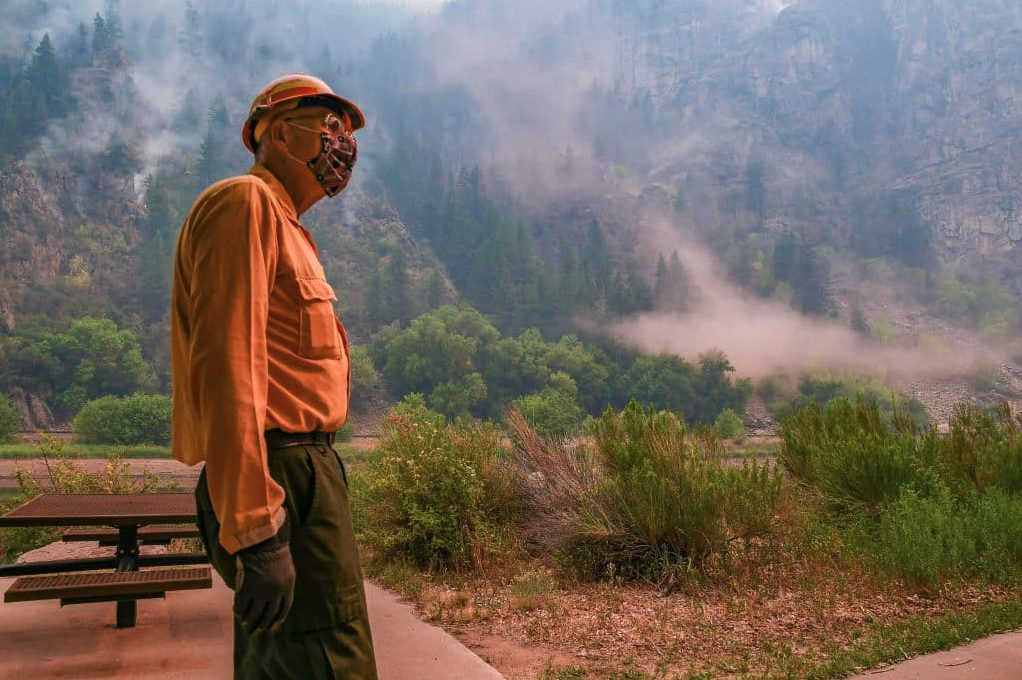Is it Smoke, or is it COVID? Symptoms Similar, and Smoke Exposure Can Make One More Susceptible to Respiratory Ailments in General, Health Officials Advise
This article first appeared in the Post Independent on August 17, 2020.

Raging western Colorado wildfires and the global pandemic of COVID-19 are merging to create a dual health concern, public health officials warn.
Wildfire smoke, which has been prevalent throughout the region over the past week, can irritate lungs, cause inflammation, affect a person’s immune system — and make at-risk populations more prone to lung infections, including COVID-19, Garfield County Public Health advises.
The Centers for Disease Control has even created a dedicated web page called Wildfire Smoke and COVID-19 page, which provides an explanation of the differences between symptoms of smoke exposure and COVID-19, and advises ways to protect oneself from wildfire smoke during the pandemic.
Dr. Barry Hammaker, a surgeon and chief medical officer at Vail Health, spoke to the correlation between the dueling health risks during a Monday video press conference sponsored by Garfield and Eagle county public health to address smoke and air quality concerns in general.
“Anyone (who) is having respiratory issues of any kind should seek medical care, where they can decide if you should be COVID tested, versus a more standard treatment, such as the use of an inhaler,” Hammaker said.
Hammaker said they haven’t seen a significant number of people come into the emergency department suffering from smoke exposure, at least in the Vail Valley.
When it comes to protecting oneself from COVID-19, he said the basic rules of avoidance still apply — washing one’s hands regularly, wearing a mask in public, not touching your face, social distancing, etc.
“If somebody had significant smoke exposure — beyond what most of us are getting just being outside right now — that might make them a little bit more susceptible to any respiratory illness, because it affects the mucous membranes and affects your immune system,” Hammaker said.
With rapid testing available for COVID, he said it’s easier to sort out those who are experiencing pulmonary irritation from smoke and someone who truly has COVID-19.
“The biggest thing with the smoke is really avoidance … stay indoors as much as possible, keep your windows closed, no heavy activity outdoors, keep your exercising inside …
“And, anybody who does have baseline lung issues, especially asthma, needs to be careful with the smoke exposure,” he said.
Morgan Hill, environmental health manager for Eagle County Public Health, said the rules of avoiding smoke exposure do run a bit counter to what public health officials advise regarding COVID-19 exposure.
“With the smoke, the recommendation is to stay inside when smoke levels become heavy in your area,” she said. “We know that this is conflicting messaging for COVID, when we’ve been telling everybody to get outside, that outside is the safer environment … the more ventilation the better.”
Oh, and those face masks that are worn to protect oneself and others from spreading the coronavirus? They don’t do much to keep the smoke out of one’s lungs. That’s because the small particulate matter in smoke, known as PM-2.5, will still get through and be inhaled, health officials advise.


